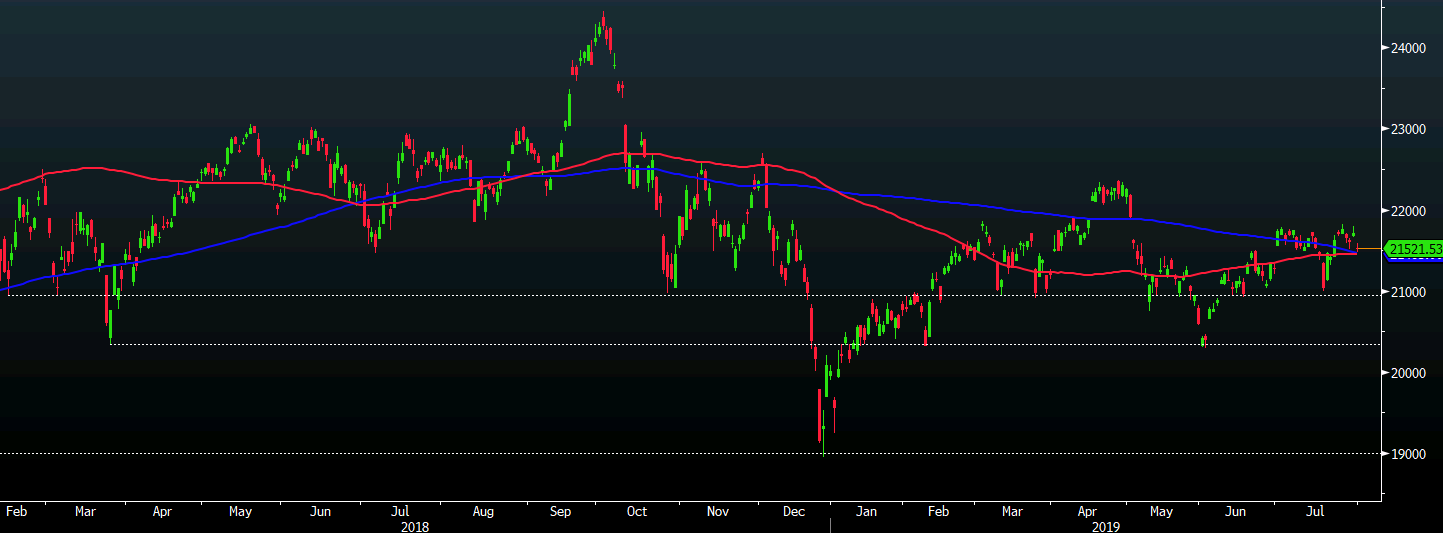The full text of the July 31 statement from the FOMC
June indicates that the labor market remains strong and that economic
activity has been rising at a moderate rate. Job gains have been solid,
on average, in recent months, and the unemployment rate has remained
low. Although growth of household spending has picked up from earlier in
the year, growth of business fixed investment has been soft. On a
12-month basis, overall inflation and inflation for items other than
food and energy are running below 2 percent. Market-based measures of
inflation compensation remain low; survey-based measures of longer-term
inflation expectations are little changed.
Consistent with its statutory mandate, the Committee seeks to foster
maximum employment and price stability. In light of the implications of
global developments for the economic outlook as well as muted inflation
pressures, the Committee decided to lower the target range for the
federal funds rate to 2 to 2-1/4 percent. This action supports the
Committee’s view that sustained expansion of economic activity, strong
labor market conditions, and inflation near the Committee’s symmetric 2
percent objective are the most likely outcomes, but uncertainties about
this outlook remain. As the Committee contemplates the future path of
the target range for the federal funds rate, it will continue to monitor
the implications of incoming information for the economic outlook and
will act as appropriate to sustain the expansion, with a strong labor
market and inflation near its symmetric 2 percent objective.
In determining the timing and size of future adjustments to the
target range for the federal funds rate, the Committee will assess
realized and expected economic conditions relative to its maximum
employment objective and its symmetric 2 percent inflation objective.
This assessment will take into account a wide range of information,
including measures of labor market conditions, indicators of inflation
pressures and inflation expectations, and readings on financial and
international developments.
The Committee will conclude the reduction of its aggregate securities
holdings in the System Open Market Account in August, two months
earlier than previously indicated.
Voting for the monetary policy action were Jerome H. Powell, Chair;
John C. Williams, Vice Chair; Michelle W. Bowman; Lael Brainard; James
Bullard; Richard H. Clarida; Charles L. Evans; and Randal K. Quarles.
Voting against the action were Esther L. George and Eric S. Rosengren,
who preferred at this meeting to maintain the target range for the
federal funds rate at 2-1/4 to 2-1/2 percent.


